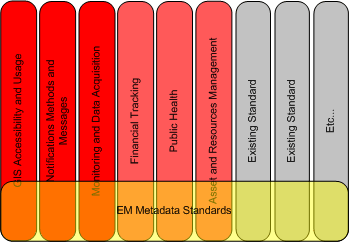
Figure 1: EM Core and Metadata Standards framework
[From: http://www.oasis-open.org/committees/download.php/1391/2003.03.25%20-%20EM.Requirements.zip, draft. See the OASIS TC website for updates.]
Copyright © 2002 The Organization for the Advancement of Structured Information Standards (OASIS)
For the purposes of clarity, we offer the following definitions for terms which may appear in, but are not specific to, this document.
In order to help ensure the efforts of the EM TC
the group will or has researched, reviewed, and performed any necessary contacts with the following efforts. Additionally, the TC has reviewed several recognized and important development methodologies and standards to help guide our overall process.
The following is a list of specific standards.
The following is a list of specific Technical Committees within OASIS the EM TC will communicate and potentially collaborate with.
The following is a list of specific standards bodies.
The driving purpose of this document is to list the requirements of the EM TC in order to further define and focus our efforts, the relationship we have to other work, and to provide a vision for our overall direction. While these items may evolve over time, they represent the founding principles of our focus. The requirements, themselves, are as follows:
While the scope of what and how incident and emergency components can be applied for interoperability is broad, the efforts of the EM TC was initially focused on several specific areas, which were mentioned in the original Call for Participation. As we begin the process of creating these standards, we have further focused our initial efforts in the following areas, including capability with appropriate operational structures such as NIMS, ESF, and ICS:
In addition to these initial areas of focus, the EM TC has also identified the following as a priority:
The efforts of the EM TC SHALL conceptually be organized into the following two initiatives:
All created schemata SHALL be considered designed in a way to represent modules and will collectively create an incident and emergency data interoperability framework. All EM Core Standards modules MUST be interoperable with each other, and the EM Metadata Standards MUST interoperate with other designated standards. Visually, this is represented in Figure 1.

Figure 1: EM Core and Metadata Standards framework
When reviewing existing standards and groups, the EM TC discovered many standards efforts already adopted and/or underway. In order to best leverage the existing work of these groups, any current implementation investments, and to avoid duplication of work and confusion, the EM TC will only focus on gaps that are present. The purpose of the EM Core Standards is to address these emergency and incident standards gaps.
As shown in Figure 2, the end result of this process will be the creation of new standards in an interoperable way with each other, and existing standards.
During the initial research period performed by the EM TC, the need for a common semantical interoperability standard for incidents and emergencies was identified. Unlike the EM Core Standards, the EM Metadata Standards will take a cross-standard approach. In other words, each of the existing standards were created to fill a specific need and offered no interoperability between them. By creating EM Metadata Standards we will supplement these existing standards, as well as the EM Core Standards, with information to facilitate interoperability between multiple areas of concentration.
The purpose of the EM Metadata Standards is to provide these key semantical attributes to existing standards in a way that does not prohibit them from functioning as is, but rather to add additional information, in a non-obtrusive way, to allow for greater interoperability between the standards and the systems that have implemented them. As shown back in Figure 1, the end result of applying the EM Metadata Standards to the EM Core Standards and other standards, is an operationally transparent data layer that is available, if needed, to help apply consistent context to incident and emergency data.
The EM Core and EM Metadata Standards SHALL be produced in accordance with OASIS principles and policies with regard to open, public standards processes, and intellectual property rights. Additional information about these processes can be found here:
In addition to the OASIS process, the EM TC has also reviewed and been influenced by several other recognized and important development methodologies, standards, and bodies. This was done in an effort to help guide and improve our overall standards development process to ensure success. These include the following:
The OASIS EM TC reserves the right to require further restrictions upon the use of its recommended specifications for the purpose of proprietary licensing of applications including such specifications if said use in any way constrains further use of EM TC Specifications. Specifically, we wish to make it clear that an application which uses an EM TC Specification for any application with a modification that renders that or any unmodified specification obsolete or unusable in whole or in part SHOULD NOT be allowed.
When and where possible, feedback from developers, implementors, and users SHOULD be sought to improve the usability of all EM TC Specifications.
EM TC Specifications MUST conform to XML Schema Part 1: Structures and XML Schema Part 2: Datatypes syntax and rules. Additionally, EM TC Specifications SHOULD also leverage and/or be compatible with RDF, XHTML, SOAP, and WSDL.
Terseness SHOULD be sought. This is to be considered a guiding principle. By adopting this principle as a requirement at this level of commitment, the OASIS EM TC aims to ensure greater compatibility through a lack of unnecessary complexity.
The EM Core and EM Metadata Standards MUST be extensible.